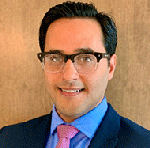Written by Ayden Jacob, BA, MSc
Edited by Gregg Khodorov, MD, MBA, Varun Danda, BS, and Ronak Ahir, BS
Written by Ayden Jacob, BA, MSc
Edited by Gregg Khodorov, MD, MBA, Varun Danda, BS, and Ronak Ahir, BS
 |
| Ayden Jacob, BA, MSc |
The foundation on which resident physicians build their clinical acumen is their medical school education. Whether it is grasping the mechanisms behind varying pathologies or understanding the complexities of anatomy and physiology, the knowledge a medical student acquires during medical school is the springboard from which budding physicians launch. The combination of the pre-clinical and clinical years of medical school empowers students to decide which specialty is best suited for them while simultaneously gaining an understanding of what other fields of medicine can offer towards patient care. Through completing the core clerkships, the aspiring pediatrician learns to appreciate the surgical consultation, and the evolving internist begins to understand when to consult an infectious disease expert. Understanding the larger clinical ecosystem you are part of as a physician is a byproduct of rotating through a diverse set of specialties in medical school.
When it comes to radiology, though, there is sparse exposure for medical students during the pre-clinical years and most will not rotate through the reading room during their clerkships. The disadvantage of this pedagogical approach is that the reading room remains a black box for most interns. Aspiring radiologists should not be the only group of students receiving medical school-level training in radiology.
Building Trust
Providing care as a siloed domain practitioner may be a symptom of the larger educational and healthcare ecosystem, as opposed to a personal preference, and can have direct implications on patient care. Trust is built with colleagues through shared experiences — the surgeon and hospitalist working together to devise a strategy that specifically serves the needs of their shared patients instead of working alone. Over time, trust is gained, a camaraderie is built and patient care is maximized. When a non-radiologist understands the effect of imaging on patient care, they are more likely to work side by side with a radiologist throughout their careers. The field of radiology can shift from the unknown of the reading room to a counseling partner directly impacting patient outcomes.
Cost Containment
A formidable obstacle to controlling healthcare spending in the United States is the cost of imaging embedded throughout the system. As a whole, 10% of healthcare spending is attributed to diagnostic imaging services. Although it consists of only one dimension of a patient’s hospital charges, it certainly impacts total healthcare expenditures. When radiologists are invited to work intimately with other specialists, it is more likely that the most appropriate imaging tests will be ordered. Open lines of communication, consultation and trust between the reading room and other specialties may help limit inefficiencies and improve downstream patient care. Building a foundation during medical school on the importance and capabilities of radiologists plants the seed for accelerated communication and collaboration between our field and other specialties, which will help reduce patient costs in the long term.
Patient Outcomes and Interdisciplinary Coordination Care
Improving patient outcomes, which is intimately tied to cost management, is perhaps the most important goal in all of medicine. As a community, we strive to focus on research and innovation in order to improve the lives of our patients. Affording patients with the right care at the right time hinges on offering an accurate diagnosis in a timely manner that is well communicated to the entire healthcare team. Introducing more advanced imaging techniques to guide therapies and help formulate appropriate clinical decisions is crucial to excellent medical care.
The advantage of involving the reading room in acute patient care is highlighted by current innovations in the field of treating strokes and pulmonary embolisms. The technology sector has developed mobile software applications for interdisciplinary teams to easily assess patients with a Pulmonary Embolism (PE) or stroke. For instance, a PE Response Team can readily view CT angiograms of patients suspected for PE, while also analyzing the patient’s labs, vitals, RV/LV ratio and clinical history.* The ED physician or interventional cardiologist can then review the images with the radiologist and communicate their clinical suggestions directly on the platform. These innovations have led to increased advanced interventions for patients with PE or stroke, as well as shorter inpatient lengths of stay, decreased morbidity and decreased medical costs. At the heart of these programs are radiologists offering immediate assistance as to the interpretation of the relevant imaging.
The future radiologist will be exposed to almost every other specialty throughout medical school and their intern year, providing them with a general overview of the goals, procedures and capabilities of their counterparts. It is our hope that as we begin to demystify the reading room, more medical students, particularly those not entering the field of radiology, gain a bird's-eye view of how our field may help them care for their patients in the most effective way possible.
*Outlines the outcomes component related to a PERT team